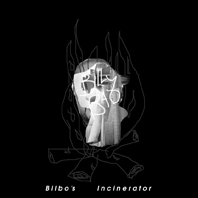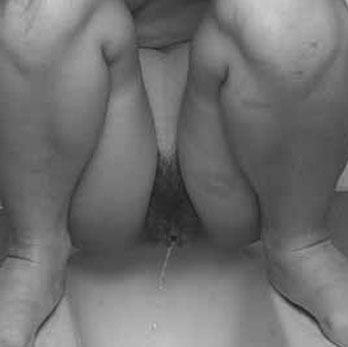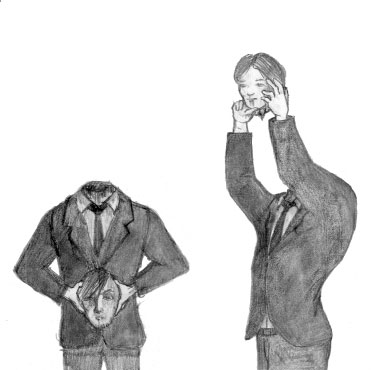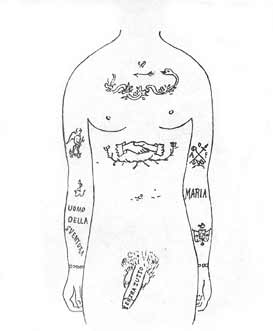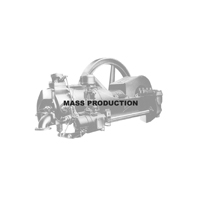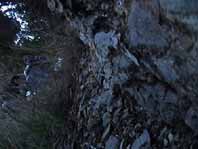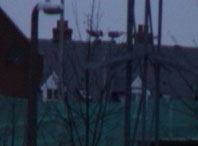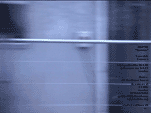w.m.o/r e c o r d l a b e l -PUTTING
CONTRADICTIONS FORWARD IN MUSIC MAKING
TO
BUY THE RELEASES PLEASE CONTACT THE DISTRIBUTORS:
Distributors: TOCHNIT
ALEPH (Berlin), Metamkine
(France), Mimaroglu
(USA), Arto Artian
(Basque Country), hibari music
(Japan), A-Musik,
(Germany), Taumaturgia (Galicia)
This
label is completely against the idea of intellectual property and
supports copying so if you have a copy feel encouraged to distribute
it.
Just keep in mind that releases are made dealing
with the specificity of each format and its possibilities (CD, CDr, 7"
& Booklets...)
Releases are being uploaded thanks to He Can Jog
The
audio files
are ogg or flac,
click here if you cannot listent
to them
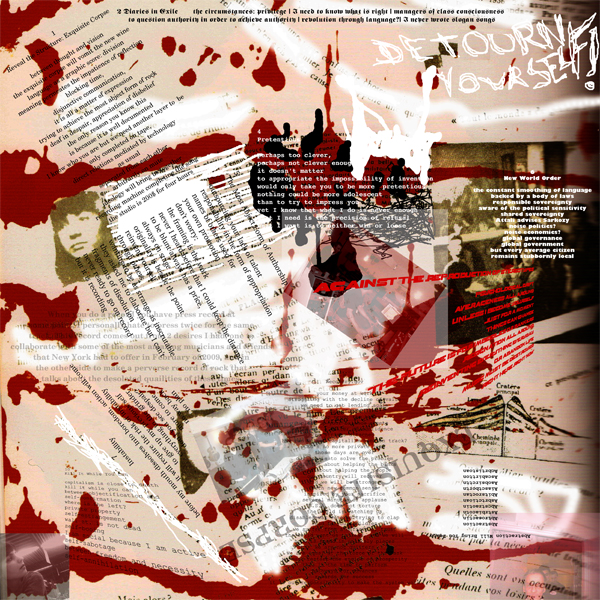 |
Mattin
Download: flacs
|
|
|
Matthieu
Saladin
When is there noise? Where is noise? Who makes noise? Déserts by Egard Varèse was first performed at the Théâtre des Champs-Élysées in Paris, on December 2, 1954. This concert has gone down in history as one of the greatest scandals in XXth century avant-garde music, as the audience rioted during the performance. Socio-historical context surely played a role, as France was still under the Fourth Republic, marked by its policy of “cultural democratization”. This concert was part of the National Orchestra’s “Tuesdays” (in fact, as it was to be broadcast live, it took place exceptionally on a Thursday), which were free and as a result attracted a wide audience not necessarily used to musical experimentation such as this. The concert was conducted by Hermann Scherchen, assisted for the occasion by Pierre Henry, who was in charge of the electro-acoustic device. It presented pieces from the classical repertoire – Mozart’s Grand Overture in B flat and Tchaikovsky’s Symphony No. 6 (“Pathétique”) – and a work that confronted acoustic and “organized” sounds in an innovative way. During the performance, people reacted noisily, and at the same time, another “music” emerged in counterpoint, improvised, developing in a more or less undecided – if not indeterminate – way, and at irregular intervals. Listening to the recording, the protests literally compete with Varèse’s music, developing a new and particularly complex musical form, a succession and intertwining of murmurs, muted mutterings, and sudden and untimely waves of boisterous disapproval. But behind the rejection, one can maybe also discover, in this other music, the intrinsic link between noise and democracy. This
disc presents
this other sonic manifestation, the one performed by the audience. In
a certain way, I have followed the logic of retrenchment that
underpins Varèse’s initial work. Edgard Varèse’s Déserts
is a mixed composition, structured in four instrumental movements, to
which three electronic interpolations are added, which interrupt the
instrumental development. During these interpolations, the orchestral
sound fades away to give way to the recorded sounds. In (Déserts),
I have simply extended this process, erasing Varèse’s piece to let
a new type of recorded “interpolation” appear: the anonymous
noise of the audience.
|
||
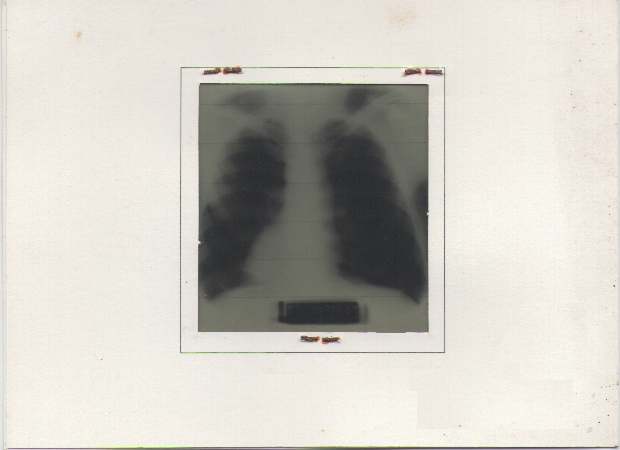 |
iMPROKUP! w.m.o/r 38, Hamaika 16, LES SEPT ÂMES DVDr + booklet Download: zip (mp3s over 3 GB!!!) A group of diverse people calls a meeting, setting a place and a time. They meet. Each one brings the things they think are necessary. The “opening-up” to action is big. They disuss and reach agreements. They have to manage that shared time in the search for freedom. They select a place, make it theirs, precariously theirs. What is the potential of that meeting, of that time lived in common? They have to make decisions and try to create a collective space, not exempt from disapprovals. Apart from the physical space they might find (that could not be found), first there is a social space that has to be built up to very basic levels. Many of the problems come directly from that. How long can they endure? What will they be able to do? How much of the potential of the action lies in their own capacity for meeting together and dealing with uncertainty? What would be left if they didn’t do anything except be in an abnormal situation? How many different situations can the general situation contain? What is it that will give the right levels of intensity? |
|
 |
Esther Ferrer |
|
|
Rhythmic Fact w.m.o/r 36
|
||
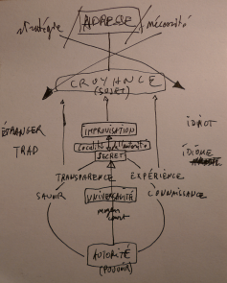 |
Ray Brassier, Jean-Luc Guionnet, Seijiro Murayama, Mattin Idioms and Idiots w.m.o/r 35 CD with 36 pages booklet Download: zip (3 flacs + pdf) We are all interested in philosophy. One of us is a professional philosopher interested in music. The others invited him to collaborate on a project. The precise nature of this collaboration is to be determined: he is not a musician and has never participated in any sort of musical performance. He agrees to collaborate but neither he nor the others have any idea what form the collaboration will take. We did something together: a concert. We want to try to explain it to ourselves: What happened exactly? How did it happen? And why? … We want to recount the story of the process, but not only that; we also want to recapitulate all the discussions that took place before and afterwards (right up to the present), articulating the questions posed by the concert – questions that are both abstractly theoretical and very concrete. Our hope is that in doing so, the experience of the concert will allow us to attain a better understanding of the representation of art in art. |
|
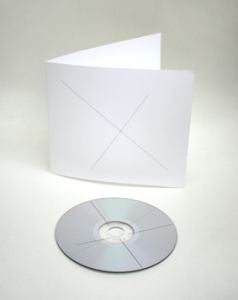 |
Loïc Blairon X/0 w.m.o/r 34 CD, Text Download: flac I have a postulate. I listen. I believe I have no ideas for making music ; but that by listening, I turn myself into a receptacle for the real. Yet everything escapes me, since my capacities are not those of a container. So I listen, before anything else. Then I act in response to what I hear. In a way, I superimpose sounds onto what I consider as my listening to the real, which is imperfect because it comes from all sides. Everything I attempt thus also escapes me, as surplus form and residue of what I hear. I never wait for anything. Again, in order to break the latent, silent quasi-mysticism, which would be the symptom of my listening, I try to restore to the real what it refuses me: sounds which I activate as so many variables acting upon the thickness of the negative. I thereby refuse to put in place a music-as-cut into the real. I want to remain in relation to the real and I say no to any ‘as’. In doing so, I say no to music, but this ‘no’ is the unilateral relation which I attempt to stabilize in and through sound, but in accordance with the real, as negative and foreclosed ; what I attempt to superimpose onto the latter acts as so many unknowns which would at once escape the whole even as they constitute it, beneath but also above all things. I
effectively pit the similar against the same, knowing all the while
that it is the presupposition of my failure that compels this
hypothetical repetition.
|
|
| KEITH ROWE & SEYMOUR
WRIGHT 3D w.m.o/r 33 3 CDR with 8 p. booklet Download: zip (3flacs + pdf, 388mb) Keith Rowe: guitar Seymour
Wright: alto saxophone 3D: three views of guitar and saxophone on a November evening at the Dance Centre in Derby, 2002 David Reid’s view (central, edge of stage): Sony ECM-999PR to a Sony PD150 video camera. Chris Trent’s view (right, front row): a pair of Oktava MK-012s to a Tascam DA-P1 DAT machine. Jeff Cloke’s view (extreme left, three rows back): Sony stereo ECM-MS907 on adjacent seat to a Sharp MD-MT80H(S) minidisc recorder.
|
||
 |
Mattin / Taku Unami Attention h.m.o/r 3 (co-released with hibari music) CD Download: 1 When you listen to a CD of improvised music, where is really the improvisation taking place ?Many would say that improvisation happens only among the musicians while recording the CD.The musicians spontaneously create a musical piece in the moment of playing,that the audience is supposed to then simply enjoy and appreciate through the recording- especially if they have paid for the CD. This way of thinking favors clearcut boundaries between producers and consumers. ''Attention'' questions the fictitious divisions that exist in hearing recorded improvisation:isn't the listening experience also an act of improvisation? There is no outside to improvisation. While hearing the CD that you have put in your CD player, you cannot isolate the sounds coming from the CD from those coming out of the CD player, or the computer, or the washing machine or the street. The improvisation is happening in the head of the listener, it is impossible to take a CD as a finite statement that can be constantly replicated through a perfect listening experience. Something as simple and important as choosing the volume of how to listen to the recording is a very strong decision that determines the sound and the meaning of the work. Other aspects determined by your economic possibilities also affect your listening experience, such as the quality of your stereo, or whether you have download the piece or bought it. You are constantly improvising with your immediate surroundings! ''Attention'' is an attempt at addressing the listener directly, making him/her engage in a process of self-reflection. It suggests that any listening experience is mediated both by the context and the choices made by the listener, which alter the meaning of the work and become part of the creative process, even if people at the top of the music production chain – musicians and producers - might say it is not. |
|
 |
" " [sic] Goldie "ABJECTOR" [sic] h.m.o/r 2 (co-released with hibari music) 2 CDS Download: 1, 2 (flac format) Recommended first solo-release by the great 'percussionist', trouble-maker, Deflag Haemorrhage / Haien Kontra member from London. Double CD of live & direct miniatures for Drums, Voice, Credit Card, Bird Whistle, and Guitar Amplifier/Leads. WHAT A LUXURY! Daniel (Tochnit Aleph) |
|
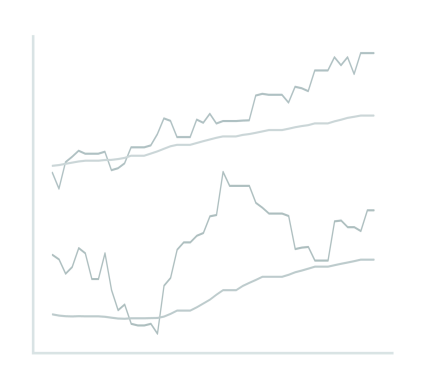 |
Matthieu Saladin Stock Exchange Piece w.m.o/r 32 CDR Download: 1 The Stock Exchange Pieces are transpositions of rates and index of the Stock Exchange to sine waves, with simple substitution of units. The rates fluctuations determine the swings of resulting frequencies. In this piece, the rates of oil and gold and their respective 50-day moving averages (MA 50) usually associated with them are transposed to sine waves by simply swapping units. For example, if the oil barrel is worth 61.43 USD, the frequency of the sine wave will be 61.43 Hz; for gold, if its index is at 648.05 USD/ounce, the frequency of the sine wave will be 648.05 Hz, etc. Thus, the swings of high frequencies correspond to fluctuations of gold and its MA 50 and the swings of low frequencies to fluctuations of oil and its MA 50.The considered period is 50 days (from March 4 to April 22, 2007) so that the moving average of the last index is calculated from all the individual values heard during the piece. The ratio for duration is 1 day is equal to 1 min, thus the piece lasts 50 min. The index/frequencies are separated in pan, according to the following distribution: rates of gold and oil on the left, MA 50 on the right. The sine waves move about, converge or move away from each other, mirroring oscillations of the Stock Exchange and thus generating acoustic phenomena in their movement – sonic transcription of a flow. |
|
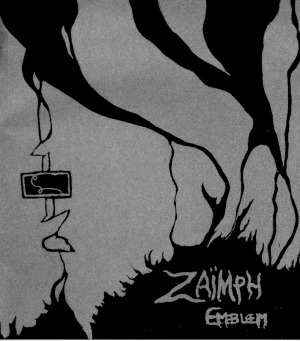 |
Zaïmph EMBLEM w.m.o/r 31 CD Download: 1, 2 Through her work with Hototogisu and Double Leopards, Marcia Bassett has prudced, respectively, blasts of gravelly brut-noise and spiralling passages of privitive hypno-mysticism. Emblem, produced under the Zaimph moniker, recapitulates these two aesthetic polarities. The first track hails from the Hototogisu end of the spectrum, with tumbling guttural distortion and a distinctive mechanical underpinning, as if she's attached a contact mic to a cement mixer put through an overblown bass amp. The second piece reflects more of the Double Leopards sensibility, focursing upon a kosmiche tone float for a guitar and interwoven filter sweeps. At first Bassett stretches her guitar's cyclical patterns into a mournful bellow, but over the 30 minute piece, she allows the trim tales to coalesce into a leaden curtain of narcotic minimalism. Jim Haynes (The Wire) |
|
 |
M.B. Symphony for a Genocide w.m.o/r 30 co-release with Hospital Productions CD Download: 1, 2, 3, 4, 5, 6, 7, 8, 9, 10 Long-time coming re-mastered reissue of this legendary side from Maurizio Bianchi, still one of the central Industrial/experimental records to come out of the revolutionary underground tumult of the late-70s/early-80s. Originally issued in 1981 on Sterile Records this is a harrowing wake for liberal/humanist notions of humanity in the shadow of the Holocaust, with black tunnels of martial, mechanised analog drone, wailing alarm codes, primitive drum machines and conveyor belt rhythms marching inexorably into the heart of darkness. Alongside the TG 24 Hour box, the Broken Flag set on Vinyl-On-Demand, a buncha the Italian power electronic sides, Nurse With Wound's Chance Meeting and Whitehouse's Dedicated To Peter Kurten this remains one of the truly epoch-defining recordings and it still sounds every bit as disturbing and interrogating as it did the first time you ever encountered it. "The moral of this work: The past punishment is the inevitable blindness of the present" "Master work, true Industrial." - Dominik Fernow, Prurient/Hospital Productions. |
|
KEITH ROWE SERVES IMPERIALISM |
MICHEL HENRITZI KEITH ROWE SERVES IMPERIALISM w.m.o/r 29 CDR with 8 p. booklet Download: 1, 2, 3, 4 This release raises a few interesting questions about improvisation and recordings thereof. Is a recording of an improvisation still an improvisation, or has it become a composition, frozen in time, put out on vinyl or CD (or in fact any other sound carrier)? Or is it simply a documentation of an event? The booklet comes with some interesting notions about it, which I won't spoil here. The concept behind the music is interesting. Michel Henritzi invited four improvisers to send him a recording of improvised music which is placed on the right channel and on the left channel we hear improvisations by Henritzi. None of this was made with hearing what the 'other' was doing. "It's an arbitrary collage between two distinct digital channels". Divided into four strict tracks of ten minutes, each deals with a certain aspect of sound. 'Feedback' explains itself through the guitars of Henritzi and Bruce Russell, 'Independance' has Mattin on guitar and Henritzi on hammer, electric saw and acoustic guitar and is indeed two very distinct channels of Fluxus like happening sound, mixed with noise. A jack is played on 'Action Directe' while Taku Unami plays computer in a slightly rhythmic fashion, with electric disturbance on the other speaker. The most pure improvisation piece comes from Shin'ichi Isohata on an acoustical playing on an electric guitar, while Henritzi plays a turntable. Pure improvisation, perhaps, because it sounds like it to those who are only slightly familiar with the genre. Throughout I thought all four tracks were great, and wether they are composed or improvised is something I don't care about that much. The result, the artifact, the residue or the conservation in time is what matters. And that is great. Franz de Ward (Vital) |
|
 |
Josetxo Grieta Euskal Semea w.m.o/r 28 CD with 12 p. booklet Download: 1, 2 Josetxo Grieta is the triangle composed by Josetxo Anitua (voice & radio), Inigo Eguillor (drums) and Mattin (voice & guitar).Epeear Semea I ( version for 20 guitars, broken glass, 3 watering cans and voice) Epeear Semea II (with drums and vocals) "Euskal Semea" is the Basque redefinition of "European Son" ( Lou Reed's particular homage to his mentor Delmore Schwartz, poet and professor at Syracuse University). Those two tracks are a punch in the face and a brillant exemple of creative music coming out from Bilbao."Epeear Semea I" starts with a gentle field recording (the audience waiting for chaos?) till a low end aquatic drone enters. Things are getting fucked up from here: abrupt soundscapes growing and making you loose the sense of orientation progressively."Epeear Semea II" features repetitive and nicely broken drums with flashes of insane vocals and guitar building into a very intense freak out before slowly going away. when the music stops it makes you realize that this is a live recording, while people clapping hands politely after such a sonic storm. The artwork is beautifull: a big size glossy paper 12 pages booklet (with a nice bloody banana on the cover) featuring texts (partly in english) including lyrics, creative comments about the recordings and some clues about the perception of a so called national identity by Basque artists. Antoine Chessex |
|
 |
M.B. Genocidio 20 w.m.o/r 27 CDR Download: 1, 2, 3, 4, 5, 6 We might be surprised to see names such as MB or Bruce Russell appearing on W.M.o/r, the label that usually releases many Mattin related works (live works, collaborations, studio works), but his constant traveling lets him meet other people, and keen networker, he knows how to tie them to his label. I have no idea when Maurizio Bianchi's 'Genocidio 20' was recorded but for various reasons it could be an old work, or perhaps something new, but if that's the case than he's playing some old tricks. The first of the six tracks starts out with a nazi speech (not Adolf, but somebody else, I think Rudolf Hess, but identifying voices of nazi idiots is not my science) and quite quickly piercing electronics. Other nazi people also have their say. This could be MB's 'Weltanschauung' record from a quarter of century ago. I believe he lost interest in this kind of stuff, hence me doubting the recentness of this release. But the fourth piece starts out really soft, and that is very unlike early 80s recordings, so perhaps this is recent? I don't think I care very much about all of this, as I must say I am glad he left the path of new age musics, which he marked his return to the world of music, and he is back on track with some experimental noise. The whole nazi thing, limited to the first track, is not my coffee, but throughout I thought this was a fine disc of electronic noise, skipping records. Industrial music at it's most conservative, but M.B. still does a great job, old or new. Franz de Ward (Vital) |
|
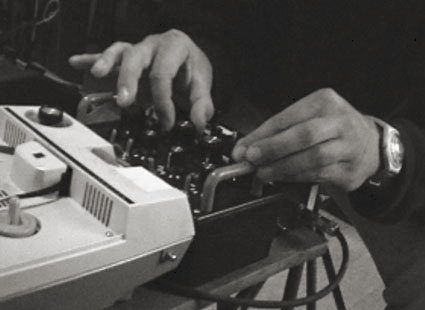 |
Bruce Russell 21st Century Field Hollers and Prison Songs w.m.o/r 26 CDR with 20 pages booklet Download: 1, 2, 3, 4, 5, 6, 7, 8, 9 ‘The only reason you know this is because it is well-documented.’ Mark E. Smith This album has been made entirely from samples taken from the Midnight Crossroads Tape Recorder Blues album, which I made with Ralf Wehowsky for A Bruit Secret. Like that album it is a tribute to the spirit of the blues, viewed through a prism of 21st century cultural criticism. It evokes an earlier era when the relationship between a performer and a song arose out of a community, not a property relation. In appropriating my own material I have short-circuited the prevailing ethos of piracy and bricolage, and returned in a sense, to my self.Despite being made in New Zealand, and using some recordings from the Rhineland, the two places that are really central to this album are the Mississippi Delta and the island of Jamaica. Bruce Russell |
|
 |
La Grieta Hermana Hostia w.m.o/r 25 CDR Download: 1, 2, 3, 4, 5, 6, 7, 8, 9, 10, 11 So you wanna be a rock'n'roll star? First of all you should learn some sincerity, use your best irony and deliver yourself from any useless post-production gimmick. After this, you're only halfway through the brutal in-your-face honesty of "Hermana hostia", a project by Mattin and Josetxo Anitua that sounds punkier than punk itself, a raw collection of totally lo-fi songs, most of which sound like intelligent variations on Velvet Underground's "Sister Ray"; the only instrumental (the 15-minute title track) is a no-nonsense calvary of aesthetical conventions moved by disjointed drumming and feedback-driven hypnosis which will have your nerves reeling at the end. Apropos of irony, lyrics like "Tu cerebro se desnuda en busca de viagra" and titles such as "Vivo en un frigorifico" are enough to love this release; but my overall favourite remains "Porvenir desierto", a post-atomic radiation slow swing with demented modified vocals going from a drunkard's rant to alien chipmunks which makes me laugh heartily every time I play it. Mattin confirms once and for all his unpredictable attitude, an example of absolute "I-do-what-I-want" purity that should be followed. Massimo Ricci (Touching Extremes) |
|
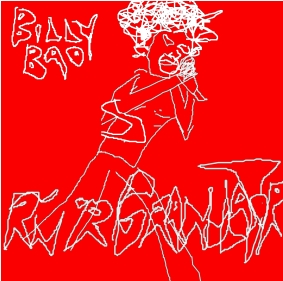 |
Billy Bao (with Alan Courtis, Pablo Reche, Xabier Erkizia, Alberto Lopez & Mattin) Rock 'n'Roll Granulator w.m.o/r 23 CD DELETED Download: 1, 2, 3, 4 An appropriate name I suppose for a guy who resides in Bilbao, Spain, and between this new EP and the "Bilbo's Incinerator" 7" two years back I am certain to gobble up any crust this Stooges-worshipping Nigerian ex-pat throws down. Mattin offers up an Mp3 of the 7" on their home page , and as a connoisseur of damaged, destructo-garbage psychedelic punk this slab ranks up there with any hate-fueled insanity committed to wax by the Brainbombs, Sightings, Liquorball, or Jim Steinman. You get piles and piles of brutal, mindless guitar ripping layer after layer into the proceedings, just getting worse as it goes along, but on the new EP, the heavy-handedness instead gets replaced with total confusion and deliberate mind-fuckery with your brain and speakers (note "Evaporogoration", (real audio) which caused several listeners and the Station Manager to call the studio when I played it, asking what was going on with the air signal). As punk rock as it all sounds, the modus operandi of Mattin seems very much to be computer music, and to some extent (my pal T. Hunger has accurately called it "rock concrete") Billy Bao falls under that category. I dunno, then you get "El Grado Zero del Pulso" which is a drum equivalent to Chinese Water Torture, you never know when the minimalism and silent passages are going to erupt into a pure shitstorm, and sometimes it does, sometimes it does not. Brian Turner (WFMU) |
|
 |
Deflag Haemorrhage/Haien
Kontra Luxury w.m.o/r 22 CDR Reissue on CD on Tochnit Aleph May 2009 Download: 1, 2, 3, 4, 5, 6, 7, 8, 9, 10, 11, 12, 13, 14, 15, 16, The long awaited debut release of Deflag Haemorrhage/Haien Kontra aka Mattin (guitar, vocals and computer feedback) and " " (real name Tim) Goldie (drums) [+vocals, disc, chain and bird whistle] comprises 15 tracks recorded between July 2002 and November 2003. It includes one truly scary field recording made by Zoe Broughton at Huntingdon Life Sciences back in 1997, where she was working undercover for a ChannelFour documentary to expose the notorious animal research facility's appalling cruelty to animals (see www.shac.net/HLS/exposed/broughton.html).A concert or album of unrelenting ferocious noise, whether by Hijokaidan, Borbetomagus, Merzbow or The Dust Breeders, may be a highly enjoyable rush of pure adrenaline, but it's no longer exactly a surprise. Mattin and Goldie can burst eardrums as well as the above - watch your speakers on the apocalyptic "Submucosa" - but they've learnt their lowercase lesson well, and use disturbingly quiet passages and slowmenacing drones to equally devastating effect. Mattin is as unpredictable as ever, lurching from the kind of delicate laptoppery that graced his Grob release Building Excess with Klaus Filip, Dean Roberts and Radu Malfatti, to blasts of unmitigated sonic terror that will melt the fillings in your teeth. His guitar work and vocals are just as extreme, especially on the splendidly titled "It's Not Your Fault You Are The Authentic Version Of What The Rest Of Us Can Only Imagine", apparently recorded live (listening to the screams of terror and the vicious thudding of heavy chains I'm glad I wasn't there). Goldie's drumming is savage and ritualistic, from the isolated explosions of "Humiliated" to the all-out blitzkrieg of his solo offering "Lacguage = Noumenal Sarcoshyce" (a whole page of similarly impenetrable logorrhea adorns the 6" x 8" album cover), but it's refreshingly far removed from both free jazz and Improv percussion cliche, even though I suspect his collection includes a fair number of Eddie Prevost albums. Luxury is an album of awesome intensity, one that deserves to be blasted mercilessly from a 40,000W PA outside Huntingdon Life Sciences every day until the torture ceases. Dan Warburton (The Wire) |
|
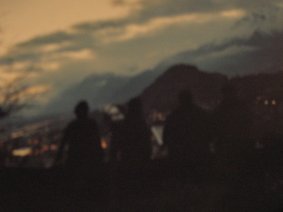 |
David Chiesa, Jean-Luc
Guionnet, Lionel Marchetti & Jerome Noetinger SION w.m.o/r 21 CDR Download: 1 We are used to hearing the most radical experimentation in the smallest of spaces, so it somces asa shock to encounter a bunch of premier league electroacoustic troublemakers in a building of epic scale. The Jesuit church in Sion, on the river Rhone in the Swiss Alps, certainly sounds bast on this live recording. The four musicians, like eagles, constructed nest in the organ loft and on nearby ledges, and proceeded to play for four hours. The results (from November 2001) have been telescoped to a portable 80 minutes to the wmo label, run by London based Basque musician Mattin. Jerome Noetinger (MIMEO, Metamkine) and Lionel Marchetti have worked as a duo for the last 12 years. Bothe use electroaucoustic setups, in Marchetti's case involving speakers, mics and lashing of fresh feedback. David Chiesa is a bassist who has appeared in a trio with Tom Chant and Eddie Prevost. And organist Jean-Luc Guionnet is a Xenakis student and member of Hubbub, with a solo organ album on A Bruit Secret. Tangerine Dream this ain't, but the musicians are audibly enjoying the church's generous acoustic. Much patient, ominous exchange of drones and scary electronic malfunction noise is interpesed with electric stroms and howling saxophone, as a group let rip with dark exuberance. Guionnet's sax in particular dives from the rafters like a delirious harpy, and we all descend into an almighty, soul-shredding, sonic inferno, which I can imagine the Jesuits being pretty happy with. Elswhere there are longueurs where not much happens, possibly representing the Purgatory side of things. An audacious and at times utterly exhilarating release. By Clive Bell (The Wire) |
|
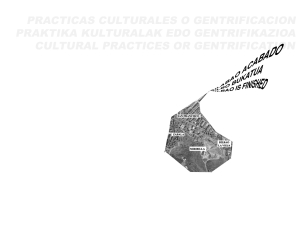 |
Bilbao Acabado/Bilbo Bukatua/Bilbao is Finished w.m.o/r 20 Book Download: 1 ÍNDICE / AURKIBIDEA / INDEX Capítulo 1: páginas 3-9 Amatau TV Antenak: Hiriko haizeak / La Ciudad en el Aire / City on the Air Capítulo 2: páginas 11-22 Metabolik BioHacklab Capítulo 3: páginas 23-44 Periferiak La Mirada Simultánea/ Aldi Bereko Begirada/ Simultaneous View Capítulo 4: páginas 45-53 Mattin Convertirse en Bilbao / Bilbo bihurtu / Becoming Bilbao Capítulo 5: páginas 55-96 Francis Gil, Iñaki Vázquez y Diego Peris. (gies-FIM) Washington no paga traidores / Washingtonek ez ditu traidorerik ordaintzen / Washington does not pay traitors Capítulo 6: páginas 97-146 Lorenzo Vicario and P. Manuel Martínez Monje Another ‘Guggenheim effect’? The generation of a potentially gentrifiable neighbourhood in Bilbao. / Beste “Guggenheim zirrara”? Bilbon potentzialki gentrifikablea den bizilagun generazioa / ¿Otro “Efecto Guggenheim”? La generación de un vecindario potencialmente gentrificable en Bilbao. Capítulo 7: páginas 147-183 Joseba Zulaika La Palanca como transgresión y memoria: sexo y religión, amor e ironía en el Bilbao postfranquista / Palanka transgresio eta memoria: sexo eta erlijioa, maitasun ta ironia Bilbo postfrankista. / The Palanca as a transgression and memory: sex and religion, love and irony in the postfranquist Bilbao. |
|
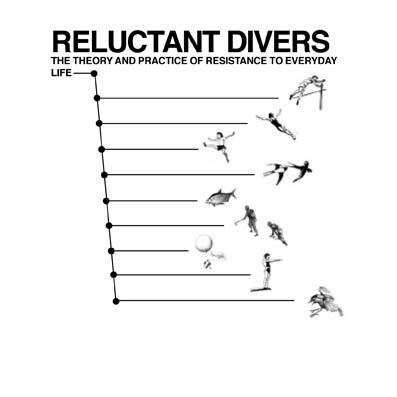 |
Pia Gambardella (from
Brownsierra) RELUCTANT DIVERS w.m.o/r 19 CDR Download: 1, 2, 3, 4, 5, 6, 7, 8, 9 "reluctant divers a recording inspired by a recurring dream experienced while in hospital. the dream showed rows of swimmers, in an enormous swimming pool. contorted, and squirming, the figures dressed in blue hooded overalls wait to jump from high diving pedestals, overwhelmed by the height and enormity of the space they are in. both myself and the reluctant divers perched in limbo creating an impression of anxiety and foreboding. the memory of the dream was triggered by the view seen everyday through the bathroom window on the ward of a dead black bird hanging tangled up in netting stretched high above the courtyard of the building. suspended in death in static flight. pia gambardella works with installation and sound performance using test equipment, adapted and self made electronic and acoustic devices that investigate and experiment with the physical and emotional properties of sound. other activities in collaboration with paddy collins include brownsierra, installation and performace group.red leader films, and national express records. producers and editors of noisegate magazine, a publication researching psychology and physiology of sound, projection within noise and silence, architectural acoustic phenomenon." |
|
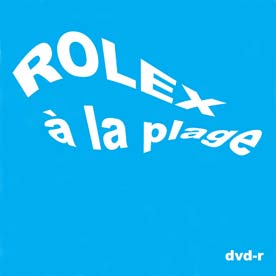
|
Rolex á la plage w.m.o/r 18 dvd-r Download: 1 (avi format) With : Alexandre Bellenger, Romaric Sobac and Clément Froissart Music : Alexandre Bellenger (automatic A100 synth.), Miho (samplers, etc.), Clément Froissart (A100 synth.)Directed by Alexandre Bellenger Video : Clément Froissart, Alexandre Bellenger, Miho |
|
| Billy Bao Bilbo's Incinerator w.m.o/r 17 Vinyl 7'' DELETED Download: 1, 2, 3 Bilbo's Incinerator (w.m.o/r 17) by Billy Bao is gorgeously noisy rock-aktion by a Nigierian expatriate and two Spaniards (with connection to the great la Secta). Guitar, drums ans vocals create a most primitively disturbed, overtly political kind of punked-out spectrum-dodge that will appeal to anyone who is interested in what Billy calls '' the degeneration of rack 'n' roll''. The sound here (especially on the title track) is classic- in the direct line of high level scumbos everywhere. There's feedback, scuzz and insane trumping and screaming for all. You'd have to place this on a virtual level with The Afflicted Man, and that's one heckuva magnificent achievement. Byron Coley (The Wire) |
||
| HINYOUKI Nyou w.m.o/r 16 CDR Download: 1, 2, 3, 4, 5, 6, 7, 8, 9, 10 Brutal noise coming from Madrid. What a luxury to be able to enjoy the good old power of electronics pushed to the limits for pleasure & sadism's shake! This is not trendy music, it does not follow lines of contemporary journalism, it is energy trhown in to the recording equipment. References to japanise underground sex culture and noise are inplicit in this recording. But also the anxiety of having lived under a pretty far right wing party for 8 years in Spain (and that is sadism without pleasure). |
||
Julien Ottavi For degreadable music:the CDR I will never release w.m.o/r 15 CDR Download: 1 The CDR has a different status from a regular CD, a status which makes the creation of a CDR label quite paradoxical. The regular CD proposes something fixed and lasting and its sale is based on these elements. On the other hand, the CDR represents both an intermediate state and an objet of transition : the information engraved on it is destined to be rendered, at a certain point in time, to its virtual state of digital composition interpretable by a computer. From CD to CDR, we move from a practice of conserving finalised products to a practice of stocking or transmitting transitory products (and this way of using the CDR is most obvious in the practice of pirating). The CDR is an extension of the computer, developing a circulation mode that is similar to the Internet, but outside the virtual net. The nature of the CDR implies another relation to time and to the process of creation. In this sense it seems contradictory to consider a CDR as a finalized product. With the CDR as with the sound pieces on the internet we seem to enter in a new field and manner of developing and showing artistic practice: not only showing finalised propositions but also the different stages of the artistic creation. The CDR and the Internet become a tool in a process of experimentation and not only means of conservation. This social use of the CDR as a transitory objet is a reflection of it's material structure : the CDR has a short life span as a physical objet, therefore the recorded sound is destinated to deteriorate. When Mattin proposed to me to produce a sound piece for his CDR label, I started thinking of the specificity of the CDR medium and wanted to hijack his proposition. The question was : how to render in sound the nature of the CDR, i.e., how to make a transitory sound form and at the same time propose a reflection on this form ? How can the sound content act on the CDR itself as a material structure ? This reflection was linked to work I started some time ago, of hand-engraving or pouring acid on the material support of the CD and see how it would act on the recorded sound. But these attempts mainly focused on the material aspect of the CDR and neglected the sound. So I began thinking about the sound content again and I realised that when you engrave a CDR on your computer and keep it for a while, the first things to disappear, soundwise, when it deteriorates, are the very high and very low frequencies. This is why this sound piece is only composed of extreme frequencies, at the limit of what man can hear and of what the machine can reproduce. The result is that the sound piece acts not only on the material structure of the CDR but also on the material environnement of the listener's body. The sound piece on this CDR is at the limits of the audible. This sound piece was realised under GNU/Linux operating system with free audio software as Ardour, Jack, Rezound, Audacity, Puredata. For degreadable music : the CDR I will never release: », by Julien Ottavi |
||
Mattin & Taku Unami Shyrio No Computer h.m.o/r 01 released with hibari music CD Download: 1, 2, 3, 4, 5, 6, 7, 8, 9 These two musicians question the whole aesthetic of contemporary digital music: The desire to upgrade software and hardware, program virtuosity, and strive for a better quality of sound... They play with the marginality of the music, transgressing the cliches of digital gigs. Take Unami playing with the surface of a speaker which vibrates inaudibly withcomputer-generated frequencies. Or Mattin's use of self-generated feedback... They have come up with the concept of 'zombie computer music': An attempt to"kill our computer sound as much as possible". They seek to break open the grave of digital music and re-animate the corpse. But rather than give it a healthy and hygenic new life, they wish for it to have characteristics of the living dead: A sound that is "endlessly committing suicide in the world of digital ferocity." |
||
| Mark Wastell Vibra # 1 w.m.o/r 14 CDR Download: 1 This release, a CD-R on Mattin's w.m.o/r label, documents Mark Wastell's continued explorations of sonic abstractions. With groups like IST, The Sealed Knot, his trio with Matt Davis and Phil Durrant, and a duo with Mattin, Wastell has expanded his use of cello as dynamic sound source to include what he refers to as 'amplified textures'. Though the scant liner notes for this release describe the 24-minute work as a composition for solo tam-tam dedicated to Roger Sutherland, that doesn't even begin to hint at the haunting shimmers and shadings that Wastell is able to coax from the hand-crafted gong. (As an aside, the gong in question is from Sutherland's own collection.) From the first reverberating waves, the piece pulses with complex layers of metallic overtones. With spectacular control, attack and decay are woven into enveloping, resonating gradations; from low, palpable rumbles to swelling surges of higher-frequency vibrations. It is how these basic elements unfold over time, meted out with an intense focus and control, which makes this such a riveting listening experience. Wastell works with percussionist Eddie Prevost in the group Sakada and this piece brings to mind Prevost's ability to create expansive pieces from a single floor tom. The recording by Graham Halliwell effectively captures the physical nature of the sound, though clearly some of the more subtle overtones of the room are lost. The CD mentions that this is the first in a series of pieces for solo tam-tam and it is a remarkable inauguration of the cycle. Michael Rosenstein (signal to noise) |
||
PINKNOISE |
CD DELETED Download: 1 JUNKO & MATTIN - PINKNOISE (can't recall label name or be arsed to dig out disc) is beautiful. Thats right. I read some reviews of this baby which referenced the usual kinda "screaming torture victim" stuff and maybe a bit of the old "gender angle" but it didn't sound like any of that to me. J is up in the mix and really clear - maybe not even amped up and her vox don't mesh in with the general onslaught as with Hijokaidan or Dust Breeders. J and M are doing the same thing - they move together (like Sea Ensemble?) j with pure voice, M with some wonderfully scrunched up electronics- BUT- because of their different instruments there is this palpable and quite expressive and tasty s-p-a-c-e between them which is what made this disc sound so beautiful to a sonic aesthete named myself. Ashtray Navigations |
|
| HELIOGABALUS Tourette is Normal (excerpt 2) w.m.o/r 12 CDR Download: 1 A highly entertaining 27-minute burst of insane, distorted malarkey-noise...primitive, wild and colourful lo-fi electronica and guitar work to revitalise the jaded palette. Imaginary wild guitar solos are being fed in real time through a digital mincer and relayered with mad organ attacks, falling at random into incoherent, strangely compelling shapes. What times we live in when, with the correct tools in his hands, it seems that any man may build for himself a music-box from Hell! Nothing much is known about this clown Heliogabalus, who filches his name from a genuine figure in Roman history and wraps this CDR in some splendid etching-like images of a cutaway view of head and a tattooed guy with a large penis, and with message inscribed on said penis...the cutaway head image suggests, with some accuracy, the damage that this hard-edged noise will wreak on your sensitive bonce. Any damage inflicted by tattooed penis, however, we take no responsibility for. Spaniard Mattin (whose label this graces) certainly manages to find some real eccentric characters out there... ED PINSENT (The Sound Projector) |
||
| Bruce Russell Los Desastres de las Guerras w.m.o/r 11 CD with 20 pages booklet Download: 1, 2, 3, 4, Bruce Russell's Los Desastres De Las Guerras, an album haunted by the duende of Federico Garcia Lorca's "Theory and Function of the Duende", a text from which guitarist Russell extracts several quotations to illustrate his own essay "Practical Materialism: Lesson Three". This is one of three tracts accompanying this release, the others being Matthew Hyland's "Disasters of Peace", a Marxist analysis of Al Qaida's claiming authorship of the Madrid bombings on March 11th this year, and Mattin's own musings on the mass protests that took place in the Spanish capital two days later. That same day, Russell recorded the three magnificent and desolately throbbing guitar improvisations that open the album, Lorca poems once more providing their titles. The danger implicit in the concept of duende - the noun is untranslatable, combining the notions of evil spirit and inspiration - has long been a central element of Russell's work both as a solo performer and with The Dead C. "The duende resides in the guitar, in the electrical circuitry, in the exigencies of the performance itself. All these variables can conspire to seek to overcome me. [T]he performance is in a real sense a wrestling bout with an implacable foe." As foes go, there are few more implacable than Mattin himself, unleashing a torrent of terrifying feedback from behind his computer without batting an eyelid. On the album's title track, a thirty-minute duo recorded in Christchurch's Physics Room, Russell's mournful strums are suffocated by clouds of howling feedback in a slow-building electrical storm of hums and buzzes that might have a made a fitting epitaph to the bombings had it not been recorded a fortnight before they occurred. To quote Russell once more: "When the duende comes to the door of the bar 'dragging her wings of rusty knives along the ground' (Lorca), there is only one way to respond to the apparition - we play." She was there all right on February 26th.—Dan Warburton (The Wire) |
||
| Tomas Korber MASS PRODUCTION w.m.o/r 10 CDR Download: 1 This is shaping up to be a fertile year for guitarist Tomas Korber. His clear melodic strumming and judicious blending of electronics on the sublime recent disc Brackwater—a quartet with improv “superstars” Otomo Yoshihide, Toshimaru Nakamura, and ErikM—was among that album’s greatest assets. Now, with a 3” on the way from Jason Talbot’s Kissy label, Korber has unleashed his first full-length solo on Mattin’s W.M.O. Mass Production won’t be much of a surprise to those who have already heard Korber in a group context, though there’s none of the un-augmented guitar that he used sporadically on Brackwater. Instead, this disc features some of Korber’s most eerily beautiful electronics work. The album opens with some scrabbling electronic noises like marbles rolling over a bumpy surface; sounding similar to Tetuzi Akiyama’s guitar deconstruction epic Resophonie. The music slowly builds tension as a low drone hangs in the background, and as the solidness of the drone begins to take hold, it sounds like the pointillist rattles and croaks in the foreground are scratching holes in the surface of the drone. It’s clear which is going to win out in the end, though, and over the course of the next few minutes the drone slowly gains prominence, with the ratcheting electronics not so much fading out as being swallowed up by the overflowing abundance of thick droning sound, an “OM” tone that swells briefly into all-encompassing prominence, and then itself fades away to lull in the background. As this drone fades away, Korber’s electronics unexpectedly take on a more sinister cast, the sharp blasts of distortion and cranking static riffs veering far closer to straight-up noise than the electro-acoustic scene he’s usually been associated with. But deep within the chaos, there are hints (imagined?) of ghostly guitar, a subliminal echo so subdued and hidden by the noise that’s it easy to dismiss it as a mere spectral figment, summoned by the knowledge that this is an album by a guitarist, and so somewhere in there must be guitar. Imagined or not, this haunting element gives some indication of the depth of Korber’s electronic constructions. Within each gritty soundscape, and there are a whole succession of them as this single 45-minute piece moves seamlessly from one section to the next—there lurks a whole universe of detail, long sustained tones interacting with earthier scrapes and buzzes that sound like heavily processed guitar accidents.Mass Production is a self-assured and fascinating new work from this very promising musician. The serial nature of the piece precludes linear development, as each new segment seems to emerge spontaneously just as the last part is dying out, but this method of development allows the album to retain a continual air of wonder and surprise, as each new shift inevitably veers into totally new territory. Whether he’s working at bludgeoning noise, or a hazy gauze of high-pitched electronics, or a thick soup of sizzling raw circuits, Korber proves again and again on this album that he has a wide musical vocabulary, and he’s equally adept all over this tremendous range.Ed Howard (Stylus Magazine) |
||
| Taku Sugimoto, Yasuo
Totsuka & Mattin Training Thoughts w.m.o/r 09 CD Download: 1 A performance by Mattin, Sugimoto (guitar), and Totsuka (electronics) was recorded at the record shop Enban, near Koenji Station, Tokyo, during Mattin's Japan tour. The first several minutes were filled with noises from trains and the audience. Then were high-frequency noises with complex overtone structures, namely the rotation noise of the laptop fan; and an electronic sound like the noises made by crawling insects. The electronic sound, which went outside the audible range, mondulated the fan noises. This kind of performance of performance is specific to Totsuka, who used to modulate environmental sounds in live performances. These effects were combined with electronic sounds within the audible range, which corresponds to a high-frequency variant of the continuous transformation between low-frequency oscillating tones and pulses presented by Stockhausen in "Kontakte." Whne The fan noises were about to fade away, the sounded quite lyrical. Then train noises came back in, and Sugimoto subtly responded with single dry notes. In summary this recording opened a new chapter in quiet improvisation by introducing environmental sounds as essential elements. Improvised Music from Japan |
||
| Taku Unami Intransigent towards the detectives of capital w.m.o/r 08 CDR Download: 1, 2 A limited release CD-R, this latest dispatch from the enigmatic Taku Unami is fittingly released on laptop troublemaker Mattin’s imprint. Long associated with Tokyo’s contemporary improvising scene, and having honed his own aesthetic in the city’s ultra-quiet Off-Site improvisation meetings, Unami has released several provocative recordings on his own Hibari label (where he’s played guitar and electronics alike). On this oddly-named release, he contributes two long tracks on computer alone, each pregnant with very long silences. As is customary with this scene, microscopic sounds and a nearly Feldmanian attention to space are key indicators of the path taken (and of those not taken, of course). On the first piece, Unami lingers long on sounds akin to muted cymbals – in between long stretches of space, the occasional metallic splash interjects. The music thus isn’t declamatory or showy in any way (it’s reserved even by this idiom’s standards), nor is it laminal (in the AMM sense), dedicated to the slow accretion and reduction of sound. Unami isn’t concerned about dynamic arcs or anything of the sort, but seems content simply to make each gesture and non-gesture atomistic and self-referential. With extreme patience, he coaxes the music into a somewhat busier space, allowing glimmers of dialogism (a glitch responding to a thud, etc.) to emerge and slowly ceding them into a drone-based construct. The second piece features more percussive sounds. There is variety in the noises Unami summons, and he is more willing to use long tones on this piece, but the overall intent is still to avoid compositional logic or patterns. There may be a thud as something is dropped on the floor of the neighbors’ apartment, a brief hiss of steam from the ventilator, or the slow whirr of an appliance, but that’s as close as you get to an “event” or an “idea.” This is simply a soundtrack for the late nights alone in your room, listening to the world around you. It’s probably less Cagean than that sounds, but like a lot of the most provocative creations to come out of Tokyo of late, Unami seems happy to approach music as a way of posing perceptual problems than via any concern for its content. Here the question is whether decontextualized fragments or remains stripped of all references and freed from narrative flow can constitute anything akin to a form. Is that even important? Or is it inevitable that we impose form on it during our listening? Thankfully, Unami’s improvisations are also pleasant to listen to, even if they are radically stripped down. Dusted Magazine |
||
|
|
Radu Malfatti / Mattin WHITENOISE w.m.o/r 05 CD DELETED Download: 1, 2
|
|
| belaska (Mark Wastell
& Mattin) Vault w.m.o/r 06 CD with 20 pages booklet Download: 1, 2, 3, 4 Two people sitting in a room. As with most recordings, one imagines musicians huddled around the recording apparatus of a small home recording set-up, or sectioned off in a studio, or gathered in front of the computer screen, or working the resonance of the room as a hidden member. The space affects the outcome in as many intangible ways as it does imprint some kind of measurable signature sound on the recording. (The bloodless studio document, or the timely capture of an improvisation.)What happens when that room has been chosen for its peculiarities, its intrinsic and extrinsic meanings, both musical and meta-musical? Belaska, the duo of improviser Mark Wastell and laptop performer Mattin, happened upon adisused vault - a “safety-box”, as Mattin describes it in the liner notes - inLondon. A bank vault emptied of its ‘belongings’ and of its purpose, being utilised for other purposes. Vaults have other meanings too - they can be burial chambers; they can be simple everyday rooms with arched ceiling and walls. The body consists of vaults (any arched part of the anatomy qualifies.) So, not just a bank vault then. The liner notes from Mattin and Zeigam Azizov, and Matthew Hyland, work well at explaining the intent of the piece, the theoretical resonance of recording in a disused bank vault. I wonder at whether the artists were interested in reanimating the space, in ‘correcting’ its use (cue long discourse about free improvisation and economic imperatives). Mattin and Azizov talk of secrecy, of marginality, of the presence of (and within) absence, and of the ‘fragility’ of the space, exposed by its acoustic resonance. The acoustic properties of the vault cast these improvisations in a deep wall of dark reverb, with Wastell’s ‘amplified textures’ particularly heavy and foreboding. This music sounds like an arcane document, a hidden form of knowledge, so the secrecy reference is well placed. Can sound created in a disused bank vault be considered ‘arcane’? Perhaps not, but there’s certainly a ‘hidden form of knowledge’ - hidden from everyday life - about lock-boxes, vaults, deep recesses, secret storerooms. And there’s an intrigue to hidden knowledge that this recording plays upon, offering glimpses of itself to the listener, but never fully revealing its hand.The subterranean inference of the bank vault (as shrouded, as storage, as inaccessible to the majority) parallels the music detailed on Vault. Wastell and Mattin immediately grasp both the sonic contours of the space and the extra-musical resonances of the work, and exploit every angle. Jon Dale (Dusted Magazine) |
||
Mattin/Rosy Parlane/Xabier Erkizia Mendietan is Basque for ‘in the mountains’. This work begins in the Basque mountains where Mattin and Rosy Parlane rest their computers and microphones on sleeping bags and begin a private process of aural intervention and documentation. The processed sounds on Mendietan are never performed ‘publicly’, confined to headphones and a minidisk recorder. They exist privately within the public space. What remains outside of the private sphere? The visual cue, ambiguous technical activity at a distance. Without aural clues, a possible audience has no choice but to invent an agenda, actively misinterpret the scene. The work continues when Mattin presents a set of still images to four writers and asks them to perform the role of an active audience; to create/expose possible narratives in the work independently, without access to the sounds that were produced. Mendietan is realised in material form as a CD and photo/essay booklet. The link to the performance context has been severed and can only be constantly reinvented, based on the evidence of these multiple impressions. It is possible that Mendietan is characterised by the calmness of the ‘environment’, and the ‘disruption’ of the intervention, but this assumes an original calmness/neutrality that is impossible to verify. Only the physicality of the final product can be verified. The rest is a fiction, a creation out of nothing. Joel Stern |
||
|
BI RAK
|
||
 |
Mattin higu is Mattin’s second studio project
working by himself. |
|
 |
Sakada bears witness to a single
encounter between electronic musician Mattin and percussionists Rosy
Parlane (Parmentier/Sigma Editions, Thela, Pit Viper) and Eddie
Prévost (AMM and too much else to name). The former uses his
machine to nurture a swarm of singularly malign hisses, gurgles and
overtones. Occasionally these swell up to become truly invasive before
suddenly recoiling; at other times they loiter darkly in an awkward
middle distance.
|
|
Mattin Exersize in minuscule movement of frequencies and grain
which forze a listener into an unconfortable participation/
concentration/ contemplation of density and emptiness, stillness and
momentum. |
||
|
1 susaldu (live at public life, london 30.1.01) |
||
